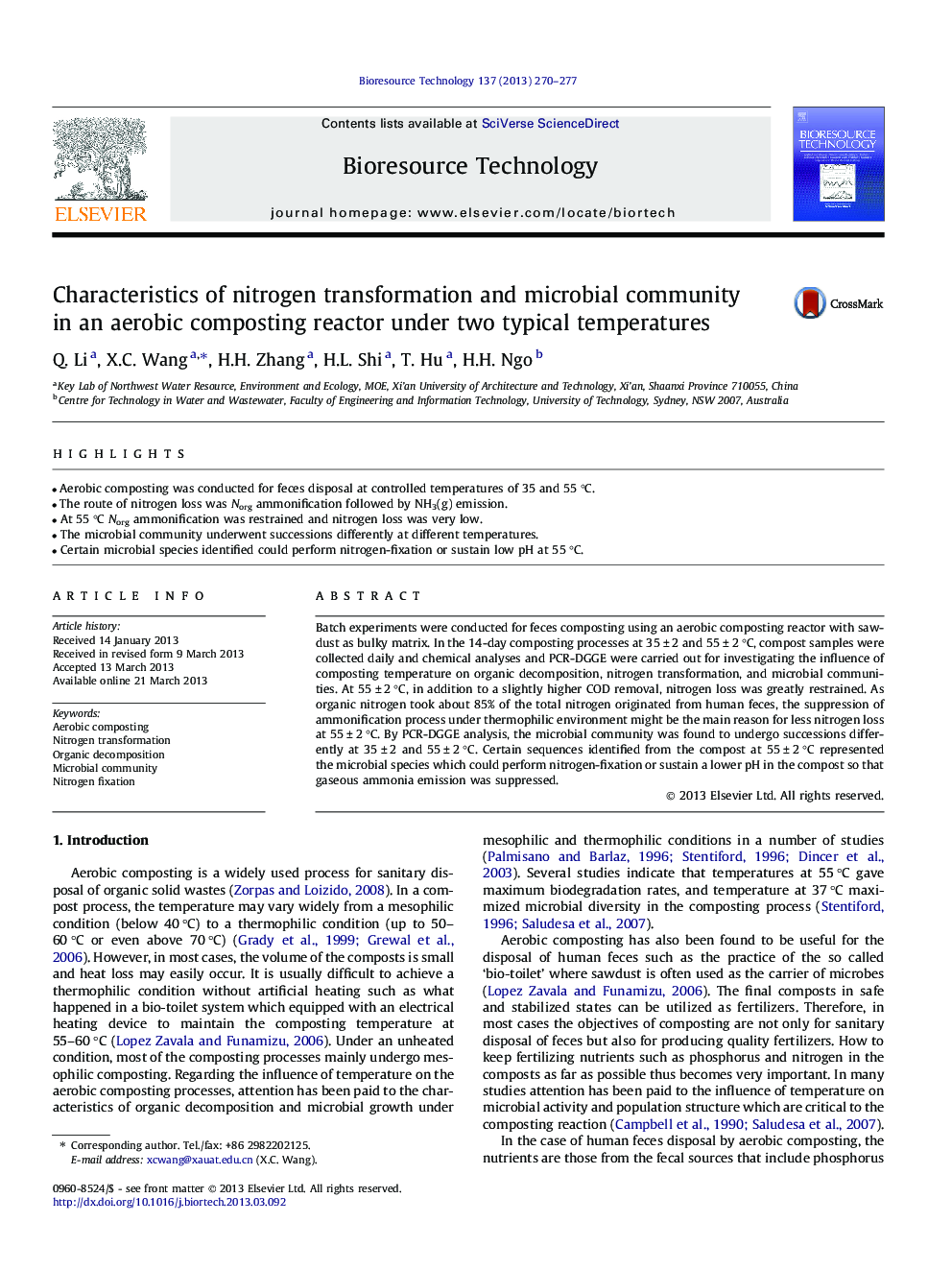| Article ID | Journal | Published Year | Pages | File Type |
|---|---|---|---|---|
| 681123 | Bioresource Technology | 2013 | 8 Pages |
•Aerobic composting was conducted for feces disposal at controlled temperatures of 35 and 55 °C.•The route of nitrogen loss was Norg ammonification followed by NH3(g) emission.•At 55 °C Norg ammonification was restrained and nitrogen loss was very low.•The microbial community underwent successions differently at different temperatures.•Certain microbial species identified could perform nitrogen-fixation or sustain low pH at 55 °C.
Batch experiments were conducted for feces composting using an aerobic composting reactor with sawdust as bulky matrix. In the 14-day composting processes at 35 ± 2 and 55 ± 2 °C, compost samples were collected daily and chemical analyses and PCR-DGGE were carried out for investigating the influence of composting temperature on organic decomposition, nitrogen transformation, and microbial communities. At 55 ± 2 °C, in addition to a slightly higher COD removal, nitrogen loss was greatly restrained. As organic nitrogen took about 85% of the total nitrogen originated from human feces, the suppression of ammonification process under thermophilic environment might be the main reason for less nitrogen loss at 55 ± 2 °C. By PCR-DGGE analysis, the microbial community was found to undergo successions differently at 35 ± 2 and 55 ± 2 °C. Certain sequences identified from the compost at 55 ± 2 °C represented the microbial species which could perform nitrogen-fixation or sustain a lower pH in the compost so that gaseous ammonia emission was suppressed.
